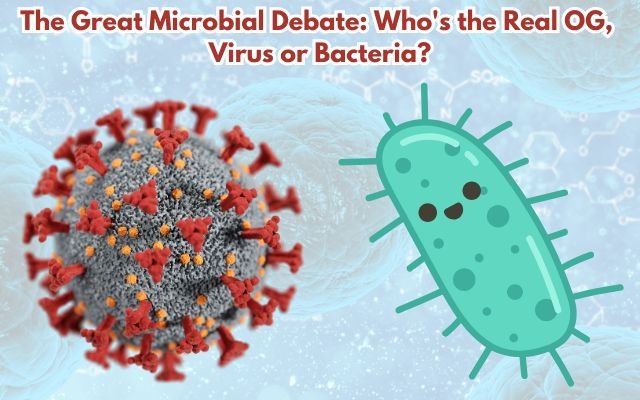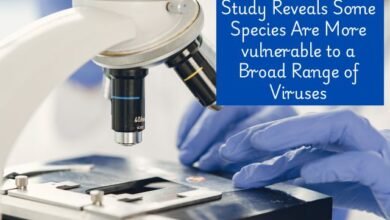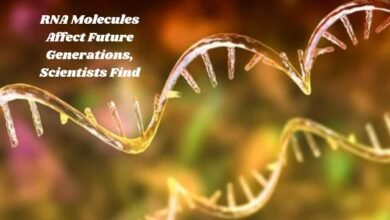Solving the Biological Puzzle: Which Came First, Viruses or Bacteria?
Uncovering life’s origins: Did viruses or bacteria emerge first? Explore the theories and scientific clues in the quest for answers.

According to scientists, life on Earth first appeared more than 4 billion years ago. Earliest RNA & DNA building blocks were created in the early Earth’s environment by a “primordial soup” of molecules including carbon. Earliest microbes very basic life forms were result of these molecules eventually organizing into biological interactions according to Karthik Anantharaman, a computational biologist from University of Wisconsin-Madison. But natural question remains: did viruses or bacteria emerge first?
| Aspect | Viruses First 🦠 | Bacteria First 🧫 |
|---|---|---|
| Main Idea 📜 | 🦠 Viruses came first from early RNA molecules, potentially before any cells. | 🧫 Bacteria evolved first, with viruses possibly developing from them later. |
| Evidence 🔍 | 🧬 RNA-based viruses suggest very ancient origins. | 🧫 Discovery of large viruses like Mimivirus shows cell-like structures. |
| Genetics 🧬 | 🧬 Viruses have diverse genetic types: RNA, DNA, single and double strands. | 🧬 Bacteria have stable, double-stranded DNA, like most life forms today. |
| Evolution 🌱 | 🌱 Viruses might have helped early cells evolve by contributing genetic material. | 🌱 Early cells might have “simplified” into virus forms over time. |
| Researchers 🧑🔬👨🔬 | 🔹 Karthik Anantharaman, Alexander Rich | 🔹 Gustavo Caetano-Anolles, French research team (2003) |
| Current View 📈 | 🦠 Fascinating theory, but virus fossils are rare and hard to find. | 🧫 Gaining support, but still lacks conclusive evidence. |
| Limits 🚫 | 🔄 Viruses mutate quickly, making it hard to trace origins accurately. | 🔄 No direct proof viruses evolved from early cells. |
| Alternative 🌌 | 🌌 Co-evolution Theory: Viruses and cells may have evolved together from a common ancestor. | 🧫 |
Scientists are still searching for an answer to the question of which came first: viruses or bacteria. One challenge is difficulty of recreating more than 4 billion years of evolution. Bacteria, as single-celled organisms, can reproduce and live independently & their fossils date back about 3.5 billion years. Genetic evidence even suggests that first cells might have appeared as early as 4.2 billion years ago. However, this doesn’t clarify whether viruses or bacteria emerged first. In fact, genetic data indicates that first cells were already surrounded by an ecosystem full of viruses.
Viruses break down far more fast than bacteria do, therefore no physical fossils are left behind. Because viruses evolve far more quickly than bacteria, making it more difficult to track down their origins, scientists also find it difficult to date viruses based on genetic alterations. So, question of which came first—viruses or bacteria—remains one of biology’s great puzzles.
The evolutionary journey of life on Earth has been complex, and understanding the origins of viruses and bacteria is a significant part of that puzzle. Gustavo Caetano-Anolles, a bioinformatician at Carle Illinois College of Medicine, explains that the genetic sequences of organisms have changed rapidly over the course of more than 4 billion years. The condition known as “saturation,” in which sequences become so changed that they are nearly unrecognizable is caused by this continuous alteration.
Viruses are unique in that they are not considered alive. They lack metabolism and can only replicate by infecting a host cell and using that cell’s resources. This characteristic suggests that bacteria, which can live and reproduce independently, might have evolved first. However, the story isn’t that straightforward.
Many scientists thought for a long time that viruses came from primordial soup before bacteria. “RNA World” hypothesis, put forth by Alexander Rich in 1962, is one significant concept. According to this theory, basic RNA molecules stimulated chemical reactions & stored genetic information in the early universe before biological life arose. Earliest life forms emerged when these RNA molecules eventually got enclosed. With time, a more intricate molecule called DNA started to appear.
All bacteria have double-stranded DNA, as Karthik Anantharaman notes, but viruses can have other genome architectures, such as single-stranded RNA. Certain viruses may have existed before cells since they contain RNA. Many evolutionary biologists still believe in the “virus-first” theory.
New findings, however, have called into question this belief. A large virus known as Mimivirus was discovered in the sludge of a water tower in Bradford, England, in 2003 by French researchers. Mimivirus, which was once mistaken for a bacterium, is similar in size to bacteria & has the ability to make proteins. This discovery prompted researchers to examine the “bacteria-first” notion, sometimes referred to as the reductive hypothesis. According to this view, some viruses may have developed from ancient cells that progressively lost their functionality and complexity becoming totally reliant on their host cells.
Anantharaman & Caetano-Anolles both express uncertainty regarding this new idea despite its increasing popularity. They contend that proponents of bacteria-first concept frequently concentrate on particular instances rather than comprehensive data & that the theory is rather universal. Thus, question of whether bacteria or viruses originated first is still up for debate, underscoring complexity of origins of life.
The most plausible theory, according to Gustavo Caetano-Anolles, for the origins of bacteria and viruses is that they co-evolved from a single common ancestor. According to him, viruses have always played a role in the evolutionary process. “We have been incorporating viral material into our makeup from the start,” he says. According to this viewpoint, viruses should not be seen as distinct entities but rather as essential components of cellular evolution.
Caetano-Anolles is investigating structural characteristics of bacteria & viruses that may preserve “memory” of their ancient roots. He notes that a common ancestry may be suggested by the similarity in the forms of protein folds present in bacteria and viruses. By studying these protein folds, which are determined by genetic sequence, he has developed a timeline that shows how these structures evolved. He asserts that the earliest protein folds—those common to all life, including viruses—came first in this evolutionary timeline.
- Betelgeuse Has a ‘Betelbuddy’: New Findings on the Bright Star’s Companion
- 10 Surprising Psychological Facts About Human Behavior You Didn’t Know
- The Science Behind Sleep: Why You Need It
Evidence supporting various theories on the beginnings of life is being actively investigated by researchers in the subject. But as Anantharaman points out, a conclusive response is unlikely to surface. He explains, “We’re attempting to derive an event that occurred 4 billion years ago.” Truth is that this question is like a chicken-and-egg situation where the precise origins of bacteria & viruses are still unknown even though experiments can support one explanation over another. This continuous study emphasizes how difficult it is to pinpoint the beginnings of life on Earth and how all living things are related.



